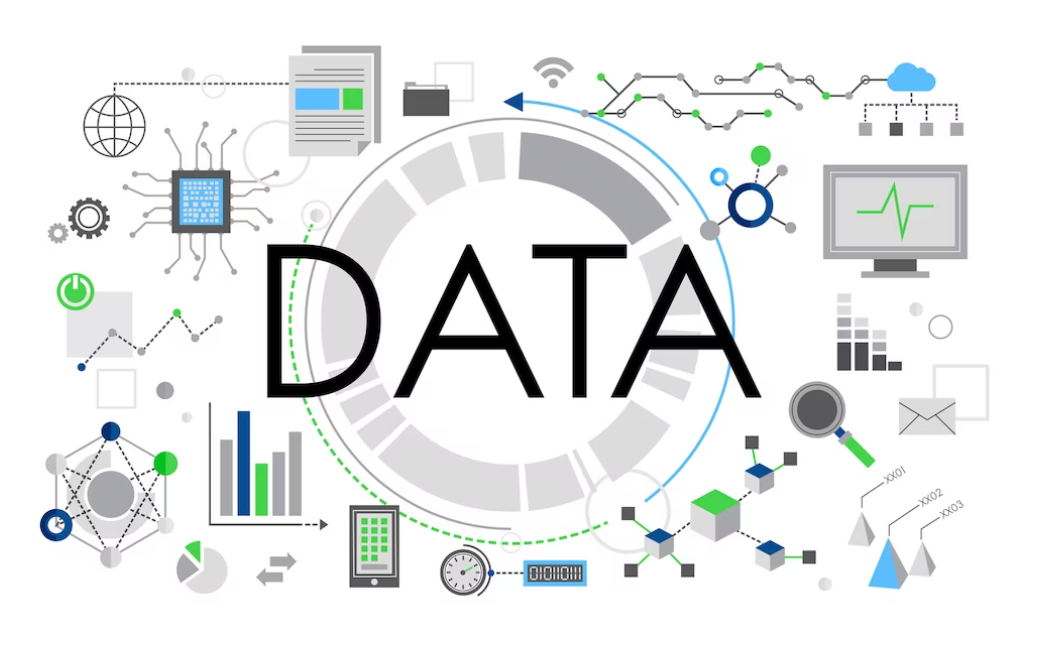Holistic Wellness: Finding the Perfect Balance of Physical, Social, and Mental Health
Understand the pillars of complete wellness
The virtually balanced description of health encompass three essential dimensions: physical vitality, social connectedness, and mental / emotional stability. When these three aspects work in harmony, we experience true wellness that extend beyond only being disease free.
The World Health Organization define health as” a state of complete physical, mental and social wwell-beingand not only the absence of disease or infirmity. ” tThisdefinition highlight the importance of balance across all three domains. But what does this balance really look like in practice?
Physical health: the foundation of wellness
Physical health from the cornerstone of overall wellness. A balanced approach to physical health include:
Regular exercise balanced with rest
The virtually balanced description of physical health include regular movement without overtrained. This meanengagese in:
- 150 300 minutes of moderate aerobic activity weekly
- Strength training at least double weekly target major muscle groups
- Flexibility and mobility work to maintain range of motion
- Adequate recovery periods between intense workouts
- 7 9 hours of quality sleep nightly
The key is consistency without obsession. Physical activity should energize instead than deplete you.
Nutritional balance
Balanced nutrition involves:
- Eat largely whole, minimally process foods
- Include a variety of fruits, vegetables, whole grains, lean proteins, and healthy fats
- Stay adequately hydrated (typically 2 3 liters of water eevery da)
- Practice mindful eat instead than restrictive dieting
- Allow occasional indulgences without guilt
The healthiest approach recognize that food is both fuel and pleasure, avoid extremes of deprivation or overindulgence.
Preventive care
Balanced physical health include proactive measures:
- Regular health screenings appropriate for your age and risk factors
- Dental check-ups double annually
- Maintain recommend vaccinations
- Address minor health concerns before they become major problems
Prevention demonstrate respect for your body’s long term wellbeing.
Social health: the connection dimension
Humans are inherently social beings. The virtually balanced description of social health include:
Quality relationships
Balance in social health mean:
- Maintain a few deep, meaningful connections quite than numerous superficial ones
- Regular interaction with supportive friends and family
- Set healthy boundaries in relationships
- Being able to both give and receive support
- Develop conflict resolution skills
Research systematically show that quality social connections correlate with longevity and reduce disease risk.
Community engagement
Social health extend beyond immediate relationships to include:
- Participation in community activities or volunteer work
- Find purpose through contribution to something larger than yourself
- Develop a sense of belong within groups that share your values
Community involvement provide both support networks and opportunities to develop social skills.
Communication skills
Balanced social health require effective communication:
- Active listening without plan your response
- Express needs and feelings understandably without aggression
- Respect different perspectives
- Being present during interactions (limit digital distractions )
These skills form the foundation for meaningful connections.
Mental and emotional health: the inner landscape
The virtually balanced description of mental and emotional health encompass several key elements:
Emotional awareness and regulation
Mental balance include:
- Recognize and name your emotions
- Accept feelings without judgment
- Develop healthy cope strategies for difficult emotions
- Express emotions fittingly
- Understand how emotions influence behavior
Emotional intelligence allow you to navigate life’s challenges without being overwhelmed.
Cognitive flexibility
Mental balance involve:
- Adapt to change circumstances
- See situations from multiple perspectives
- Challenging negative thought patterns
- Problem solve instead than ruminate
- Maintain realistic optimism
This flexibility help you navigate life’s inevitable changes and challenges.
Stress management
Balanced mental health require effective stress management through:
- Regular relaxation practices (meditation, deep breathing, etc. )
- Set realistic expectations and boundaries
- Distinguish between productive and unproductive worry
- Take breaks when need
- Seek support during especially stressful periods
Effective stress management prevent chronic stress from damage both mental and physical health.
Purpose and mean
Mental wellness include:
- Identify personal values and live consequently
- Set meaningful goals that align with these values
- Find activities that create a sense of flow and engagement
- Develop a sense of purpose beyond immediate gratification
Purpose provide direction and resilience during difficult times.
The intersection: where balance sincerely happen
The virtually balanced description of health recognize that these three dimensions always interact and influence each other:
Physical mental connection
The mind body connection is powerful:
- Exercise reduce anxiety and depression symptoms
- Mental stress manifest as physical tension and illness
- Sleep affect both cognitive function and emotional regulation
- Nutrition influences brain chemistry and mood
Respect this connection mean address both physical and mental aspects of any health concern.
Social mental intersection
Social and mental health are deep intertwine:
- Supportive relationships buffer against stress
- Social isolation increase depression and anxiety risk
- Help others boost mood and purpose
- Mental health challenges can strain relationships
Address mental health frequently require social support, while build social connections improve mental wellbeing.
Physical social connection
Physical and social health influence each other done:
- Group fitness activities that combine exercise and social connection
- Share meals that nourish both body and relationships
- Social support that encourage healthy behaviors
- Physical limitations that can impact social participation
Recognize these connections help create synergistic health practices.
Signs of a comfortably balanced health profile
How can you tell if your health is intimately balanced across all three dimensions? Look for these indicators:
Energy and resilience
Balanced health provide:
- Consistent energy throughout the day
- The ability to bounce rearwards from setbacks
- Adaptability when face challenges
- Recovery from illness or stress without prolonged effects
Sustainable practices
Balance is sustainable:
- Health habits that can be maintained long term
- Flexibility quite than rigidity in routines
- Enjoyment of healthy activities instead than force yourself
- The ability to adjust practices as life circumstances change
Harmony between areas
True balance mean:
- No single dimension of health dominates or is neglect
- Time and energy are distributed befittingly across physical, social, and mental needs
- Improvements in one area positively impact others
- The ability to recognize when one area need more attention
Common imbalances and their solutions
Understand common imbalances helps identify areas for improvement:
Physical focus without mental / social balance
Some people prioritize physical health while neglect other dimensions:
- Signs: rigidity around exercise and diet, social isolation due to health regimens, anxiety about physical performance
- Solutions: schedule social activities with similar frequency as workouts, practice mindfulness during exercise, set boundaries around health practices
Social focus without physical / mental balance
Others may prioritize social connections at the expense of self-care:
- Signs: exhaustion from overcommitment, neglect personal needs to please others, difficulty being lonely
- Solutions: learn to say no, incorporate movement into social activities, schedule regular alone time for reflection
Mental focus without physical / social balance
Some people concentrate on intellectual or emotional development while neglect physical health and relationships:
- Signs: excessive introspection, physical inactivity, limited social interaction
- Solutions: join group activities that engage the body, schedule regular connection time, practice embodiment techniques
Practical strategies for achieve balance
Create balance require intentional practices:

Source: pinterest.com
Integrated daily routines
Develop routines that address multiple dimensions simultaneously:
- Walk meetings that combine work, movement, and connection
- Cook nutritious meals with friends or family
- Group fitness classes that build community
- Mindful eat practices that nourish both body and mind
- Nature outings that provide exercise, social connection, and stress relief
Regular assessment
Sporadically evaluate your balance:
- Schedule quarterly reviews of all three health dimensions
- Notice when one area systematically receive less attention
- Ask trust friends for feedback on your balance
- Track energy levels and mood to identify patterns
Mindful transitions
Create intentional shifts between different health activities:
- Brief meditation between work and social activities
- Physical movement after prolonged mental focus
- Reflective practices after intense social engagement
- Clear boundaries between different aspects of life
Cultural and individual variations in balance
Balance look different across cultures and individuals:
Cultural differences
Various cultures emphasize different aspects of health:

Source: dreamstime.com
- Some prioritize community well bee over individual health
- Others emphasize spiritual practices as central to wellness
- Work-life balance expectations vary importantly across cultures
- Traditional healing systems frequently address health holistically
Individual needs
Personal balance depend on:
- Introversion / extroversion affect social energy needs
- Life stage and responsibilities
- Personal health history and conditions
- Unique strengths and challenges
Your balanced health profile will be unique to you.
The evolution of balance throughout life
Balance is not static but evolve:
Life transitions
Major life changes require rebalancing:
- Career changes affect time and energy distribution
- Relationship beginnings and endings
- Health challenge require temporary focus shifts
- Geographic relocations disrupt routines and social connections
Seasonal adjustments
Balance shifts course with:
- Seasonal activities and weather changes
- Holiday periods affect social and emotional demands
- Work or school cycles
- Personal energy fluctuations
Conclusion: the ongoing journey of balance
The virtually balanced description of health recognize that physical, social, and mental / emotional wellbeing are not separate goals but interconnect aspects of a single, integrated system. True wellness emerge when these dimensions support and enhance each other.
Balance isn’t about perfect equilibrium at all times, but quite about maintain awareness of all three dimensions and adjust as need. It’s an ongoing process of tuning and retuning, respond to change circumstances while maintain core healthy practices.
The journey toward balanced health is both personal and universal. While the specific balance point differ for each individual, the need for integration across physical, social, and mental dimensions remain constant. By attend to all three aspects of health with intention and compassion, we create the conditions for thriving quite than simply survive.
Finally, the best description of balanced health is one that acknowledge both the science of wellness and the art of living — a description that honor both universal human needs and individual expression. It’s a vision of health that’s comprehensive without being rigid, aspirational without being unrealistic, and integrate without lose sight of each dimension’s unique importance.



